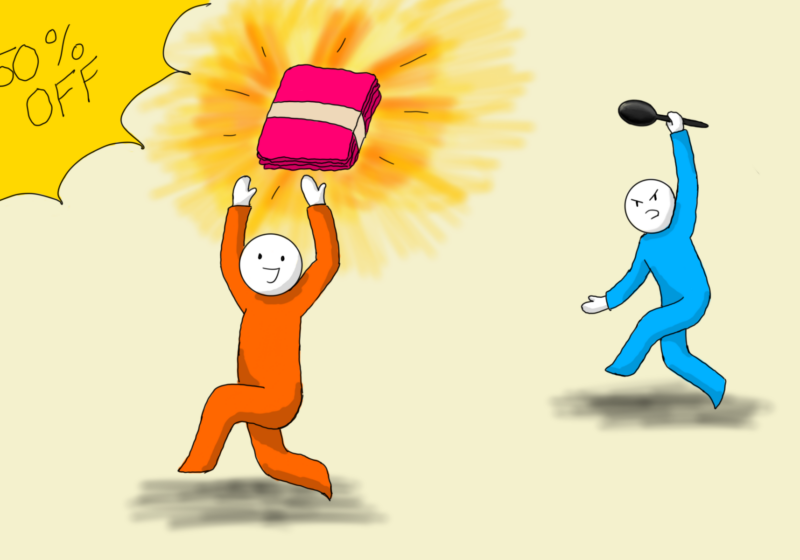According to NBA legend Charles Barkley, the Golden State Warriors play “girly basketball.”
Although he claimed his intent wasn’t to offend women and girls of all ages, the former Philadelphia 76ers legend did not hesitate to criticize a style of play known to be successfully implemented in all women’s basketball, including in the college circuit (NCAAW), and the WNBA.
While Barkley assured the sports community—and, specifically, Rachel Nichols, a basketball journalist and host of ESPN’s The Jump—that the “intent [of his comment] matters,” his objective is exactly why his statements are disappointing and indicative of the societal regard for women’s professional athletics.
In his response to Nichols, the hall of fame inductee made it clear that he didn’t intend to be antagonistic toward women’s basketball, but rather didn’t want “girly basketball” in his precious NBA.
This “girly basketball” Barkley refers to is actually what has made Golden State dominant and the winningest team in NBA history.
This diverse style of play relies on impeccable ball-handling skills and impressive long-range shooting, instead of physical play inside the paint, which yields too much dunking and self-oriented play.
Former UR Women’s Basketball (URWB) guard Emily Lewis referred to this approach as one with more “finesse,” referring to the tact and intricacies that her team executed regularly.
The Yellowjackets’ success over the past few years has been in part due to the masterclass ball handling by previous point guards Ally Zywicki and Kayla Kibling. Now, it is freshman Brenna James who continues this trend—not only with her mature leadership skills, but with her attention to precise defensive play, which has garnered her twelve steals so far this season.
Current Yellowjacket senior guard Sarah Kaminsky concurred with former teammate Lewis.
“The women’s game is more about who has the best strategy and skills, while the men’s game is more about which team is faster and stronger with the best natural ability,” Kaminsky said.
A difference between the Warriors and the URWB, aside from the level of play and gender of the players, is that Golden State is watched and gawked at by millions, while the ‘Jackets struggle to acquire the same fanbase as the University’s Men’s Basketball (URBB) team.
During double-header weekends, there is a staggering difference in spectator turnout.
On average, this discrepancy in attendance usually equates to doubled attendance for URBB, compared to their female counterparts. The men’s team amasses around 500 spectators, while URWB fluctuates between 200 and 250 total spectators at home games.
Usually, this can be expected, but last season, the debut of the University’s “We’re Better than THAT” campaign took the spotlight away from URWB’s senior night, deterring patrons from staying to watch the women play after the men.
The ‘Jackets accumulated 450 total fans, while URBB’s earlier game against Emory tallied 1,200 spectators.
“The women’s game wasn’t advertised,” Lewis said. “As great as it was that they were launching this campaign, it was senior day [… ] if they are going to advertise the men’s game, they ought to stick around for the women’s game, because we’ve put in just as much work as the men have.”
Assistant coach Kaitlin Donahoe offered similar sentiments, and even felt degraded by the whole situation.
“The We’re Better than THAT campaign situation sticks in my brain […] under the top five things to do [that] weekend, it [was] only the men’s game,” Donahoe said. “Two students were left in the student section [after the men’s game] […] those kinds of moments make you feel naturally inferior.”
It is shameful that the University was careless in their advertising, and these actions perpetuate the current ideology that we, as a society, need to move past.
But it is also pathetic that so few UR students or community members attend URWB’s games. Jim Scheible’s team not only made it to the Elite Eight of the NCAA Division-III tournament last season, but was ranked in the top 25 teams nationwide for the entire 2015–2016 season. URBB achieved neither.
Our women’s basketball team, incidentally, practices not only the elements that Barkley assumes are “girly,” but incorporates some of the traditional style he prefers.
Junior power forward Al Leslie can shoot from the field, has a free throw shot percentage of 84 percent, and does a majority of her scoring from inside the arc. Her performance last season led to her being named D3hoops.com East Region Player of the Year. It is blatantly clear that Barkley apparently isn’t ready for change in basketball, but that doesn’t mean the UR community is not.
If you want to change the current culture and stereotypes associated with female athletes and their craft, then go out and watch and support our Yellowjackets in their quest to reach another NCAA Elite Eight.
URWB plays at a very high level. And yes, they do play “girly basketball”—but that is nothing to be ashamed of.





